In March, 10gen hosted a Global Hackathon called MongoDB March Madness, and challenged the community to build tools to support the growing MongoDB community. Leafblower, a project built at the Sydney March Madness Hackathon, was the global
In March, 10gen hosted a Global Hackathon called MongoDB March Madness, and challenged the community to build tools to support the growing MongoDB community. Leafblower, a project built at the Sydney March Madness Hackathon, was the global winner of the Hackathon
Who are rdrkt?
Andy Sharman and Josh Stevenson work together on independent projects under their brand rdrkt (pronounced “redirect”) and capitalize on their largely overlapping skillset, but unique passions to build cutting-edge web applications. Josh is passionate about flexible, scalable back-end systems and Andy is passionate about accessible, responsive user interfaces.
Josh, originally from the United States, now lives and works full-time in Sydney, Australia for Excite Digital Media. He has experience with the LAMP stack, CakePHP, ZendFramework, and MongoDB. He’s also worked on projects which have required his significant expertise with jQuery, HTML5 and CSS3. He’s very active in the Sydney area tech community, regularly attending PHP, MongoDB, WebDirections and WebBlast meetups.
Andy, from the UK, also now lives in Sydney and works for Visualjazz Isobar. He has frontend experience with HTML5, Vanilla JavaScript, jQuery, Mootools, and WebGL with Three.js. In addition to that, he has experience with backend languages such as PHP, C#.NET, Node.JS and CMS’ such as Sitecore, Magento, Joomla, and Wordpress.
What is Leafblower?
Leafblower is a real-time dashboard platform we conceived and programmed for the MongoDB March Madness Hackathon. Its primary focus is on bleeding-edge, up-to-the-second application analytics and monitoring to help campaign managers and system administrators to react quickly to ever-changing trending and traffic spiking. We live in an age where one link on Reddit or a viral post on Facebook can mean the difference between “getting your break” and catastrophic failure of the application’s server infrastructure. Leafblower helps users understand what is happening “right now” in their applications and most importantly their server availability and usage by cutting out as much aggregation as possible and focusing on capturing and reporting data samples as-they-happen.
Where did the idea for Leafblower come from?
At the start of the Sydney-based MongoDB hackathon, Andy wanted to build some sort of analytics or reporting toolset to help people learn the way Mongo databases function and grow, but it wasn’t until the starting bell rang that Josh had the idea of doing real-time monitoring rather than historical analysis. That’s how Leafblower was born.
We went on to win the Sydney hackathon, and decided to really buckle down and clean up what we worked on for the global competition, rather than trying to build out too many extra features.
Anyone can look at and download everything needed to install Leafblower on Github
How does Leafblower work?
After the initial idea for Leafblower was formed, the rest of the project flowed together organically. The platform uses MongoDB as the storage engine to run all the data “blocks” which display statistics intuitively for end-users. Blocks render themselves using information passed to them via a Node.js communication layer which itself connects to a backend API server. This allows many clients to be connected and viewing dashboards without requiring any additional load on the API server and thus the application itself.
Leafblower is currently running on a Linux/Apache/MongoDB/PHP/Node.JS system, however, Linux could be swapped out for any OS, and Apache could be swapped out for any web server assuming that the correct version of the required services are installed and configured to play nicely. There is a full list of required software available on our Github page. Leafblower uses well-supported cross-OS services it so you can run an instance with the operating system you’re used to.
Rather than trying to create a platform that is generic enough to be useful to all the different applications out there, our goal was to create enough useful Blocks and then put the power to customize or extend block functionality with the people actually using Leafblower to monitor their apps. NoSQL solutions like MongoDB are the perfect fit for projects looking to allow developers to extend our platform with minimal-to-zero prior knowledge of how data is stored and passed around, internally. For example, while some of the elements of the configuration documents in MongoDB are required to function properly, whole portions are completely arbitrary depending on the data needs of a given block. With MongoDB this is no sweat. For us, the advantage is not so much about “No Schema” as is it is about a “Flexible Schema”.
When will it be ready for a production environment?
After completing the early stages of the project and successfully winning the MongoDB Global March Madness Hackathon Josh and Andy have a number of features and services, both short and long-term, to implement. Some of the items on their shortlist are:
- Users and Groups to which profiles can be assigned
- Easier setup and installation/configuration for users who want to deploy Leafblower on their own hardware
- A full suite of Blocks of both a basic and advanced nature, such as API Blocks for Twitter/Facebook/Google which do live social/analytics monitoring
- Automatic historical data comparison to make it easier to compare current live data with past trends
- Admin panel enhancements to make users, groups, profiles, and Blocks easier to configure
User logins and access groups are our first priority and we expect to include them in the next release of Leafblower on Github. We’re also hoping the community will engage with Leafblower and help us build out our library of standard Blocks.
Why did rdrkt use MongoDB?
Leafblower is a real time monitoring platform, not a complete self-contained application. In order for it to be flexible enough to monitor all sorts of potential data feeds and apis, we knew a flexible schema was the way to go. For example, let’s look at a document from the blocks collection
{
"_id" : "geoCheckIns",
"type" : "geospacial",
"title" : "Visualize checkins as they occur.",
"description" : "Block for visualizing the checkins occurring in your app bound by a circle centered at a given lat/lon and radius",
"ttl" : 5000,
"options" : {
"lat" : -33.873651,
"lon" : -151.2068896,
"radius" : 50,
"host" : "localhost",
"db" : "demo",
"collection" : "checkins"
}
}
In the case of a block, each one will always have the fields _id, type, title, description, ttl and options, however, options is a subdocument and may contain an arbitrary number of fields. In this example, we need to know which database host, database name, a collection name with checkin data to monitor, a center point to draw our great circle and the radius of the circle. From those data points, the block will be able to render a map centered over our point and drop pins onto the map as users check in to your application. This particular block would be useful for someone monitoring their social media campaign as it goes live in a specific city or region.
Let’s look at another block type for contrast:
{
"_id" : "memory",
"type" : "system",
"title" : "Memory",
"description" : "View statistics about the memory usage on your server.",
"ttl" : 1000,
"options" : {
}
}
In this example, we left options completely empty because we are retrieving the monitoring data from the server the user is currently connected to. Our application still expects an object to exist when we access options, so we maintain the structure of our document despite not needing to read any further data for this type of block. We might expect sysadmins to use a modified version of this block for monitoring servers they administer.
This is a good illustration of what we mean when we say “flexible schema”. It’s an important distinction to make from “no schema”, since there is a clear idea of how the data is structured, we’ve just allowed for flexibility in certain places where advantageous. NoSQL solutions like MongoDB are very attractive to many developers, because they can interact with the database as if they are simply storing and retrieving objects from a datastore. This is a dangerous path to follow, however, because a “set it and forget it” attitude will quickly lead to scaling and performance issues as an application grows. Know the structure of your data and only make changes to that structure incrementally.
MongoDB is easy to scale and has a vibrant user community. Leafblower gives back to the community by creating useful tools to showcase MongoDB’s advantages while teaching them how it works. It’s a win for everyone: for ourselves, for MongoDB, and for the IT Community at large.
Want more information?
Leafblower:
- Github repo
- Angelist
rdrkt:
- Website
原文地址:Leafblower: Winner of the MongoDB March Madness Ha, 感谢原作者分享。
 2 个月不见,人形机器人 Walker S 会叠衣服了Apr 03, 2024 am 08:01 AM
2 个月不见,人形机器人 Walker S 会叠衣服了Apr 03, 2024 am 08:01 AM机器之能报道编辑:吴昕国内版的人形机器人+大模型组队,首次完成叠衣服这类复杂柔性材料的操作任务。随着融合了OpenAI多模态大模型的Figure01揭开神秘面纱,国内同行的相关进展一直备受关注。就在昨天,国内"人形机器人第一股"优必选发布了人形机器人WalkerS深入融合百度文心大模型后的首个Demo,展示了一些有趣的新功能。现在,得到百度文心大模型能力加持的WalkerS是这个样子的。和Figure01一样,WalkerS没有走动,而是站在桌子后面完成一系列任务。它可以听从人类的命令,折叠衣物
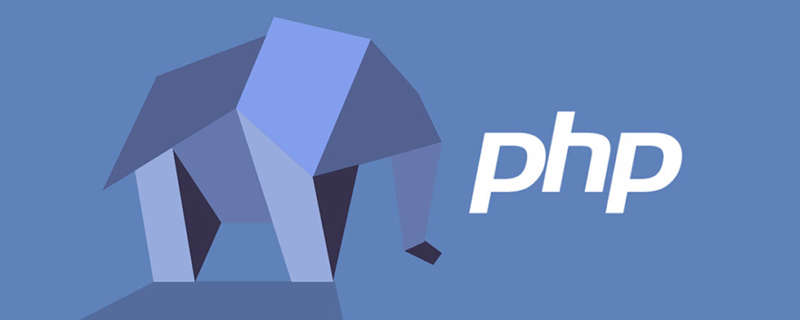 mongodb php 扩展没有怎么办Nov 06, 2022 am 09:10 AM
mongodb php 扩展没有怎么办Nov 06, 2022 am 09:10 AMmongodb php扩展没有的解决办法:1、在linux中执行“$ sudo pecl install mongo”命令来安装MongoDB的PHP扩展驱动;2、在window中,下载php mongodb驱动二进制包,然后在“php.ini”文件中配置“extension=php_mongo.dll”即可。
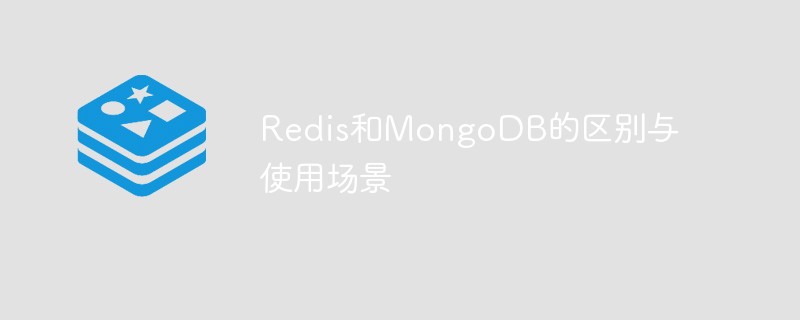 Redis和MongoDB的区别与使用场景May 11, 2023 am 08:22 AM
Redis和MongoDB的区别与使用场景May 11, 2023 am 08:22 AMRedis和MongoDB都是流行的开源NoSQL数据库,但它们的设计理念和使用场景有所不同。本文将重点介绍Redis和MongoDB的区别和使用场景。Redis和MongoDB简介Redis是一个高性能的数据存储系统,常被用作缓存和消息中间件。Redis以内存为主要存储介质,但它也支持将数据持久化到磁盘上。Redis是一款键值数据库,它支持多种数据结构(例
 php7.0怎么安装mongo扩展Nov 21, 2022 am 10:25 AM
php7.0怎么安装mongo扩展Nov 21, 2022 am 10:25 AMphp7.0安装mongo扩展的方法:1、创建mongodb用户组和用户;2、下载mongodb源码包,并将源码包放到“/usr/local/src/”目录下;3、进入“src/”目录;4、解压源码包;5、创建mongodb文件目录;6、将文件复制到“mongodb/”目录;7、创建mongodb配置文件并修改配置即可。
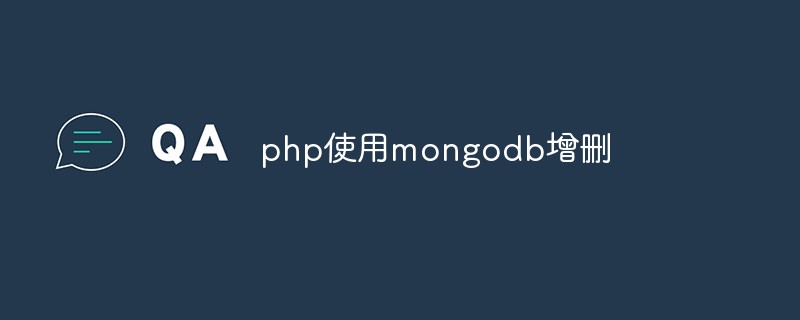 php怎么使用mongodb进行增删查改操作Mar 28, 2023 pm 03:00 PM
php怎么使用mongodb进行增删查改操作Mar 28, 2023 pm 03:00 PMMongoDB作为一款流行的NoSQL数据库,已经被广泛应用于各种大型Web应用和企业级应用中。而PHP语言也作为一种流行的Web编程语言,与MongoDB的结合也变得越来越重要。在本文中,我们将会学习如何使用PHP语言操作MongoDB数据库进行增删查改的操作。
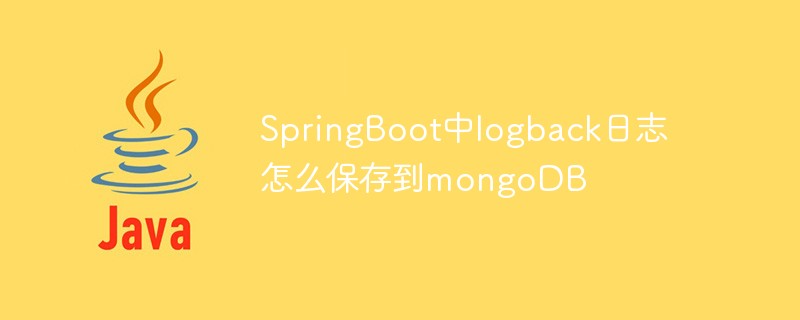 SpringBoot中logback日志怎么保存到mongoDBMay 18, 2023 pm 07:01 PM
SpringBoot中logback日志怎么保存到mongoDBMay 18, 2023 pm 07:01 PM自定义Appender非常简单,继承一下AppenderBase类即可。可以看到有个AppenderBase,有个UnsynchronizedAppenderBase,还有个AsyncAppenderBase继承了UnsynchronizedAppenderBase。从名字就能看出来区别,异步的、普通的、不加锁的。我们定义一个MongoDBAppender继承UnsynchronizedAppenderBasepublicclassMongoDBAppenderextendsUnsynchron
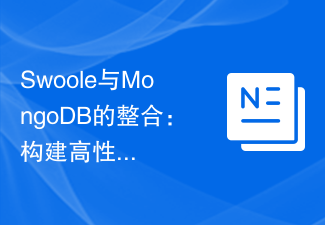 Swoole与MongoDB的整合:构建高性能的文档数据库系统Jun 14, 2023 am 11:51 AM
Swoole与MongoDB的整合:构建高性能的文档数据库系统Jun 14, 2023 am 11:51 AM在现代企业应用程序开发中,需要处理海量数据和高并发的访问请求。为了满足这些需求,开发人员需要使用高性能的数据库系统,以确保系统的稳定性和可扩展性。本文将介绍如何使用Swoole和MongoDB构建高性能的文档数据库系统。Swoole是一个基于PHP语言开发的异步网络通信框架,它能够大大提高PHP应用程序的性能和并发能力。MongoDB是一种流行的文档数据库,
 SpringBoot怎么整合Mongodb实现增删查改May 13, 2023 pm 02:07 PM
SpringBoot怎么整合Mongodb实现增删查改May 13, 2023 pm 02:07 PM一、什么是MongoDBMongoDB与我们之前熟知的关系型数据库(MySQL、Oracle)不同,MongoDB是一个文档数据库,它具有所需的可伸缩性和灵活性,以及所需的查询和索引。MongoDB将数据存储在灵活的、类似JSON的文档中,这意味着文档的字段可能因文档而异,数据结构也会随着时间的推移而改变。文档模型映射到应用程序代码中的对象,使数据易于处理。MongoDB是一个以分布式数据库为核心的数据库,因此高可用性、横向扩展和地理分布是内置的,并且易于使用。况且,MongoDB是免费的,开源


热AI工具

Undresser.AI Undress
人工智能驱动的应用程序,用于创建逼真的裸体照片

AI Clothes Remover
用于从照片中去除衣服的在线人工智能工具。

Undress AI Tool
免费脱衣服图片

Clothoff.io
AI脱衣机

AI Hentai Generator
免费生成ai无尽的。

热门文章

热工具

mPDF
mPDF是一个PHP库,可以从UTF-8编码的HTML生成PDF文件。原作者Ian Back编写mPDF以从他的网站上“即时”输出PDF文件,并处理不同的语言。与原始脚本如HTML2FPDF相比,它的速度较慢,并且在使用Unicode字体时生成的文件较大,但支持CSS样式等,并进行了大量增强。支持几乎所有语言,包括RTL(阿拉伯语和希伯来语)和CJK(中日韩)。支持嵌套的块级元素(如P、DIV),

MinGW - 适用于 Windows 的极简 GNU
这个项目正在迁移到osdn.net/projects/mingw的过程中,你可以继续在那里关注我们。MinGW:GNU编译器集合(GCC)的本地Windows移植版本,可自由分发的导入库和用于构建本地Windows应用程序的头文件;包括对MSVC运行时的扩展,以支持C99功能。MinGW的所有软件都可以在64位Windows平台上运行。

SublimeText3 英文版
推荐:为Win版本,支持代码提示!

DVWA
Damn Vulnerable Web App (DVWA) 是一个PHP/MySQL的Web应用程序,非常容易受到攻击。它的主要目标是成为安全专业人员在合法环境中测试自己的技能和工具的辅助工具,帮助Web开发人员更好地理解保护Web应用程序的过程,并帮助教师/学生在课堂环境中教授/学习Web应用程序安全。DVWA的目标是通过简单直接的界面练习一些最常见的Web漏洞,难度各不相同。请注意,该软件中

VSCode Windows 64位 下载
微软推出的免费、功能强大的一款IDE编辑器






